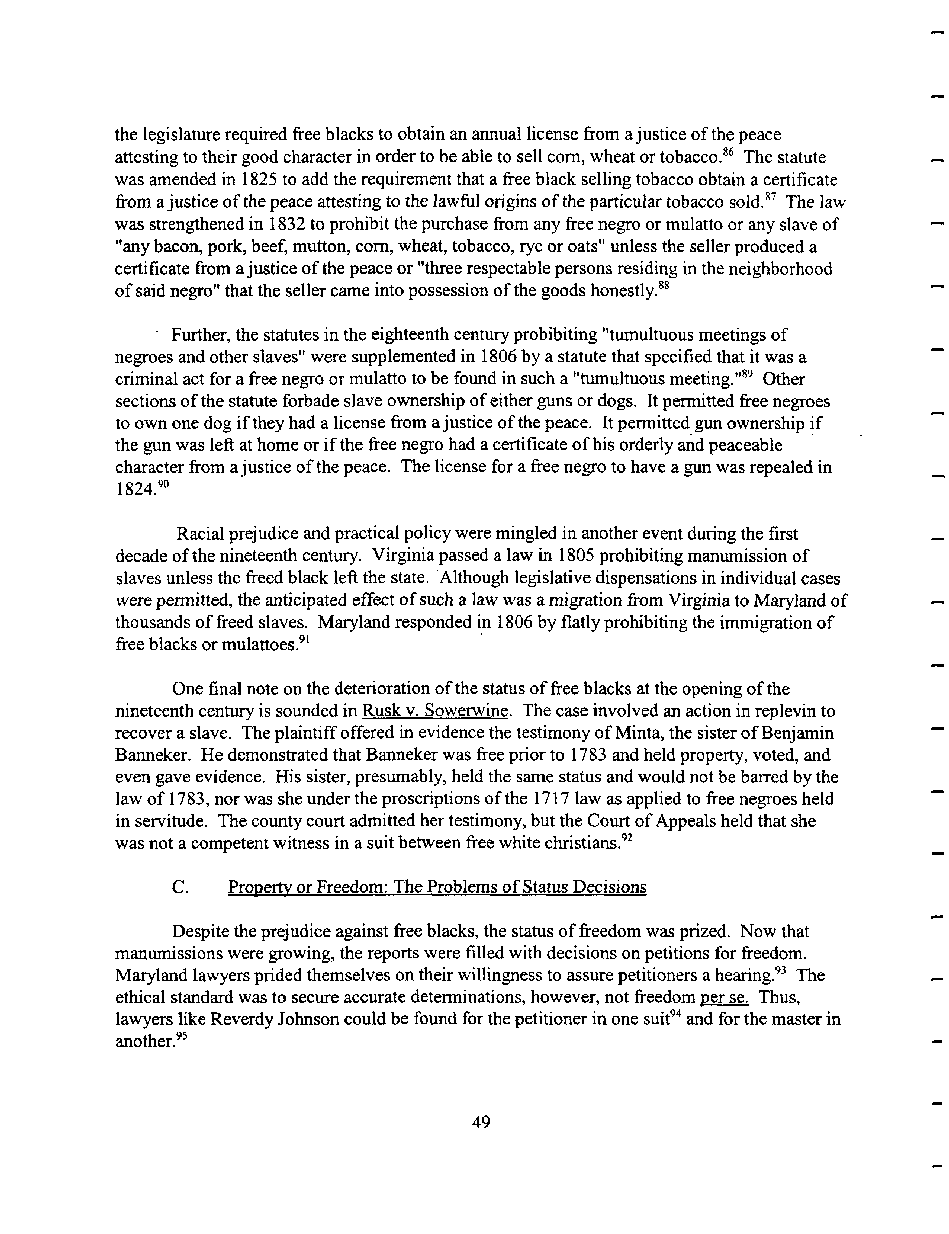|
the legislature required free blacks to obtain an annual license from a justice of the peace
attesting to their good character in order to be able to sell corn, wheat or tobacco.86 The statute
was amended in 1825 to add the requirement that a free black selling tobacco obtain a certificate
from a justice of the peace attesting to the lawful origins of the particular tobacco sold.87 The law
was strengthened in 1832 to prohibit the purchase from any free negro or mulatto or any slave of
"any bacon, pork, beef, mutton, com, wheat, tobacco, rye or oats" unless the seller produced a
certificate from a justice of the peace or "three respectable persons residing in the neighborhood
of said negro" that the seller came into possession of the goods honestly.88
Further, the statutes in the eighteenth century probibiting "tumultuous meetings of
negroes and other slaves" were supplemented in 1806 by a statute that specified that it was a
criminal act for a free negro or mulatto to be found in such a "tumultuous meeting."89 Other
sections of the statute forbade slave ownership of either guns or dogs. It permitted free negroes
to own one dog if they had a license from a justice of the peace. It permitted gun ownership if
the gun was left at home or if the free negro had a certificate of his orderly and peaceable
character from a justice of the peace. The license for a free negro to have a gun was repealed in
1824.90
Racial prejudice and practical policy were mingled in another event during the first
decade of the nineteenth century. Virginia passed a law in 1805 prohibiting manumission of
slaves unless the freed black left the state. Although legislative dispensations in individual cases
were permitted, the anticipated effect of such a law was a migration from Virginia to Maryland of
thousands of freed slaves. Maryland responded in 1806 by flatly prohibiting the immigration of
free blacks or mulattoes.91
One final note on the deterioration of the status of free blacks at the opening of the
nineteenth century is sounded in Rusk v. Sowerwine. The case involved an action in replevin to
recover a slave. The plaintiff offered in evidence the testimony of Minta, the sister of Benjamin
Banneker. He demonstrated that Banneker was free prior to 1783 and held property, voted, and
even gave evidence. His sister, presumably, held the same status and would not be barred by the
law of 1783, nor was she under the proscriptions of the 1717 law as applied to free negroes held
in servitude. The county court admitted her testimony, but the Court of Appeals held that she
was not a competent witness in a suit between free white Christians.92
C. Property or Freedom: The Problems of Status Decisions
Despite the prejudice against free blacks, the status of freedom was prized. Now that
manumissions were growing, the reports were filled with decisions on petitions for freedom.
Maryland lawyers prided themselves on their willingness to assure petitioners a hearing.93 The
ethical standard was to secure accurate determinations, however, not freedom per se. Thus,
lawyers like Reverdy Johnson could be found for the petitioner in one suit94 and for the master in
another.95
49
�
|

